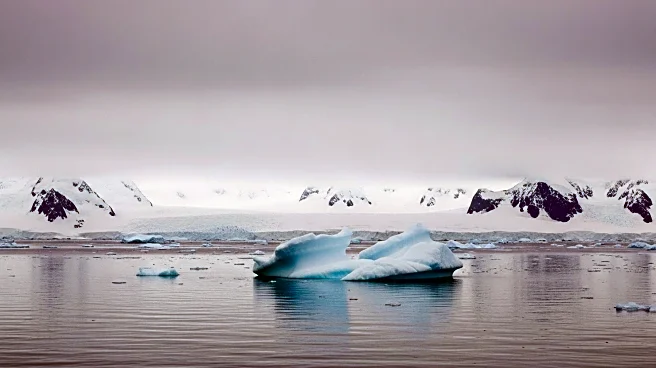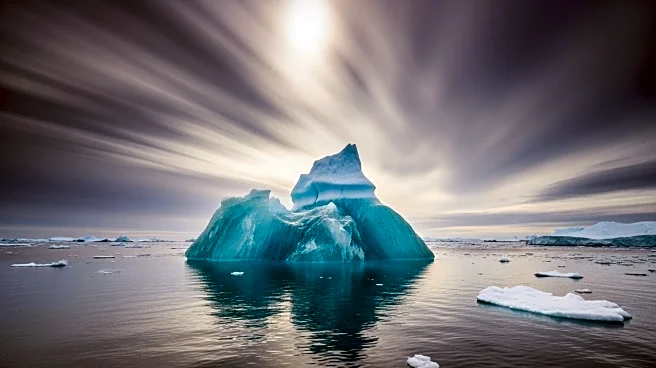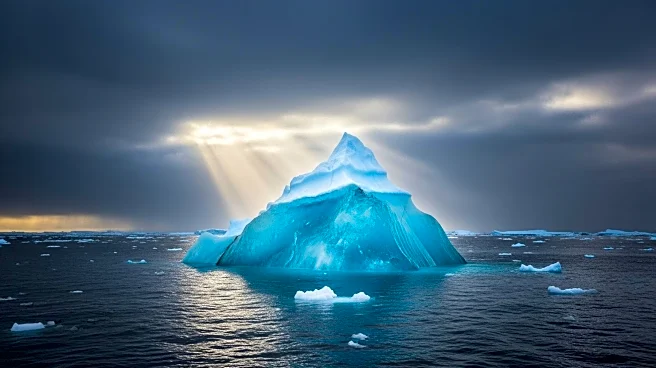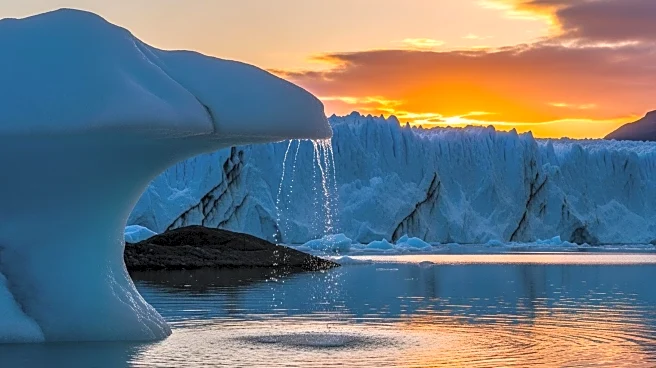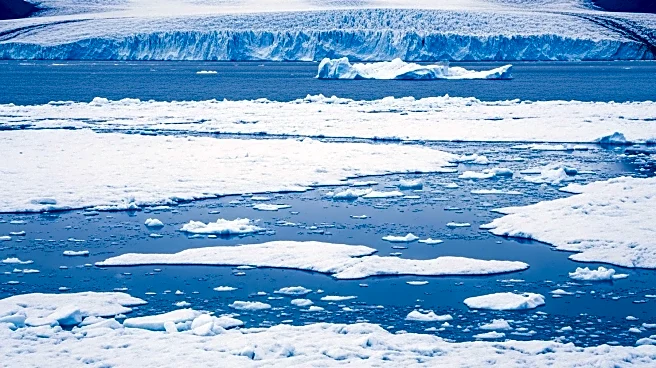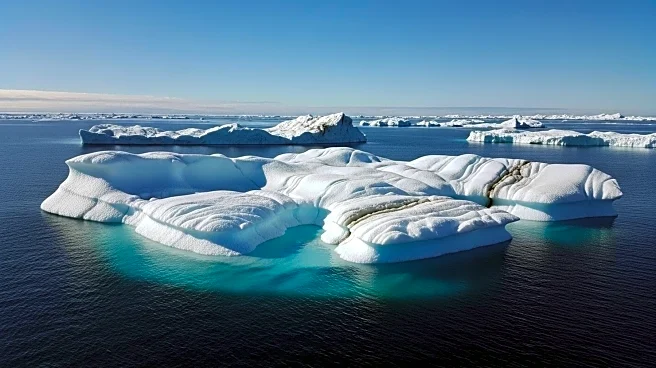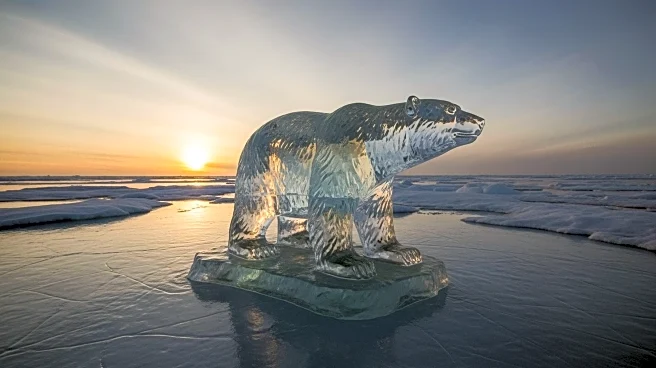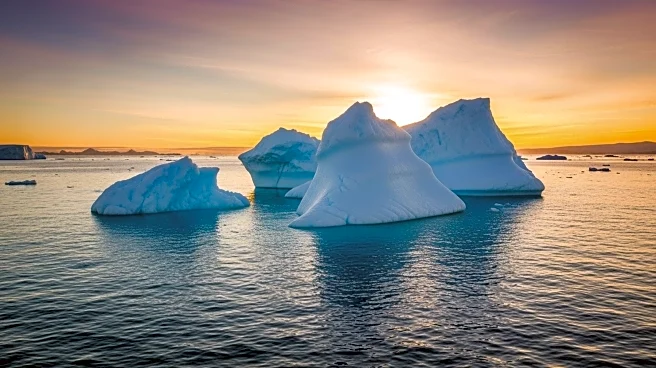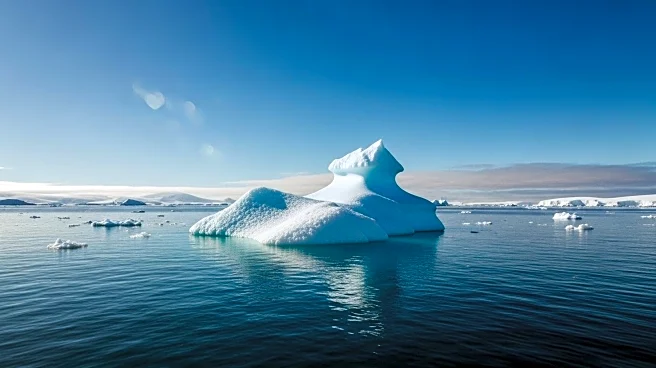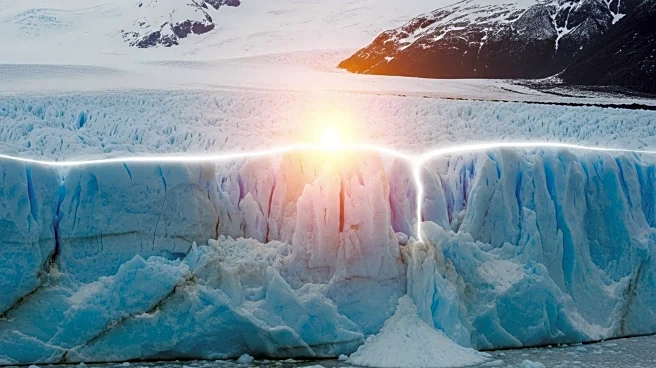What's Happening?
Antarctica has experienced a significant decline in sea ice since 2016, with the 2025 winter maximum being the third lowest on record. This rapid reduction in sea ice is attributed to human-driven warming and is considered a potential tipping point for the region. The decline has led to increased surface salinity, which accelerates melting by allowing warm deep waters to rise. This feedback loop could have long-term impacts on global climate patterns and marine ecosystems.
Why It's Important?
The reduction in Antarctic sea ice has far-reaching implications for global climate and sea levels. As sea ice diminishes, the dark ocean absorbs more sunlight, leading to further warming and increased iceberg calving. This process threatens species like emperor penguins and krill, which rely on stable ice conditions. Additionally, the collapse of ice shelves could destabilize the West Antarctic Ice Sheet, potentially raising global sea levels by several meters. The changes in sea ice also affect the Southern Ocean's ability to absorb heat and carbon dioxide, which could exacerbate global warming.
What's Next?
Scientists emphasize the need for urgent action to mitigate the impacts of climate change. This includes reducing greenhouse gas emissions and implementing resilience planning to address potential tipping points in Antarctica. Further research and monitoring are necessary to understand the complex interactions between sea ice, ocean circulation, and climate. International cooperation and data sharing will be crucial in developing effective strategies to address these challenges.

